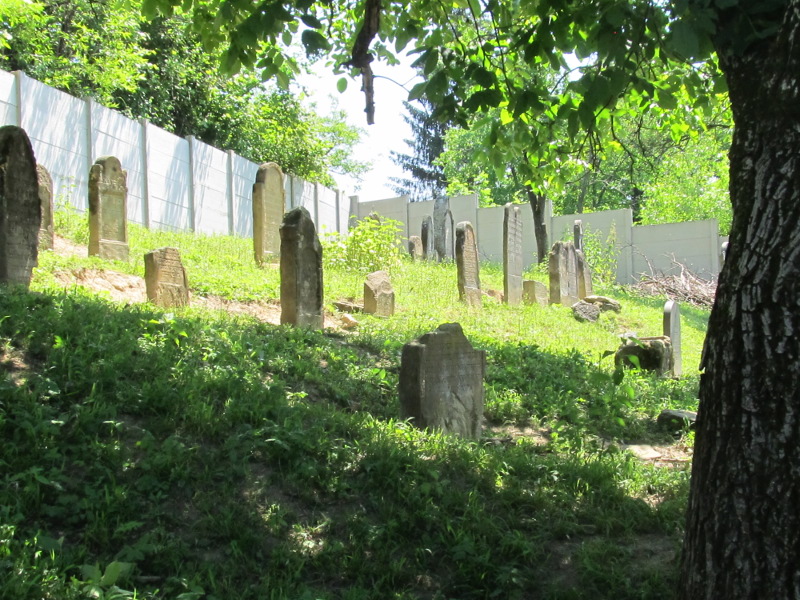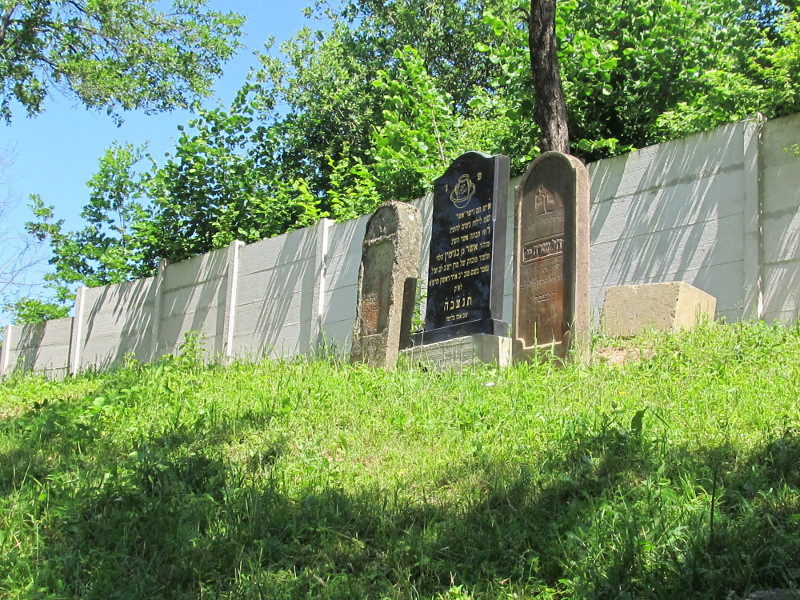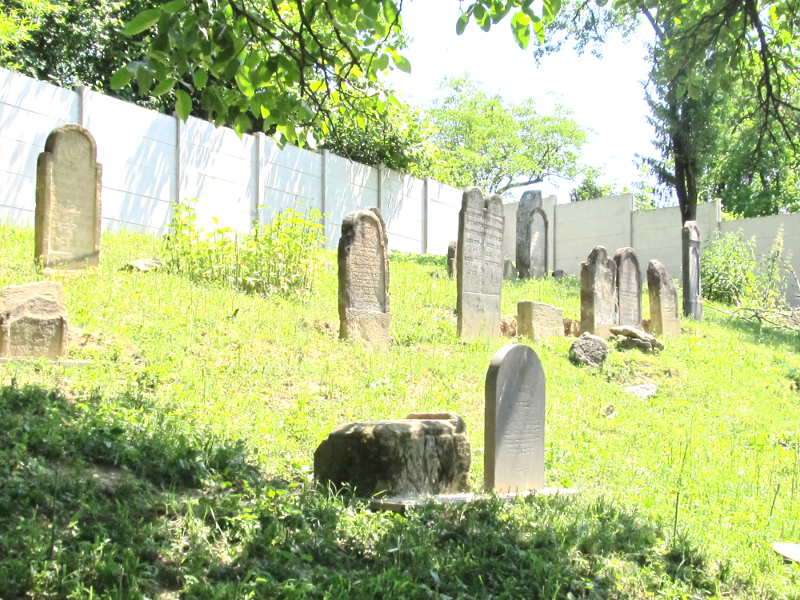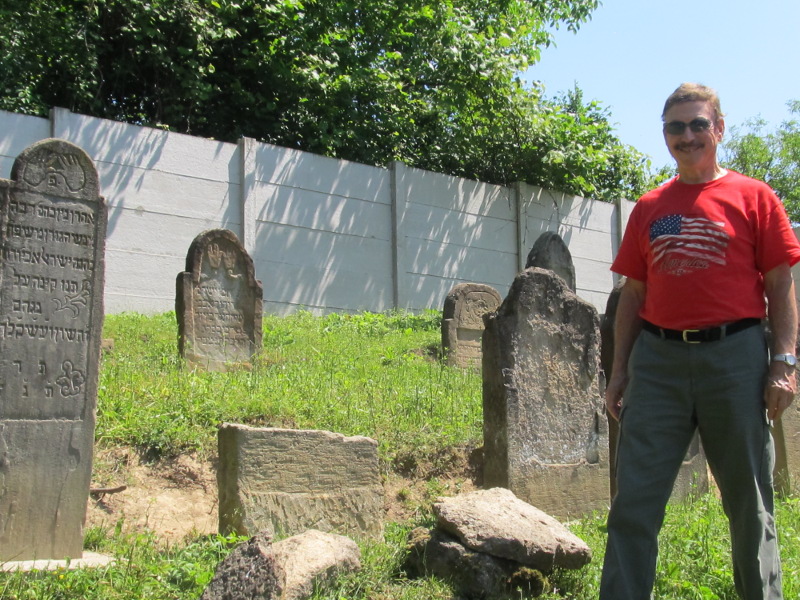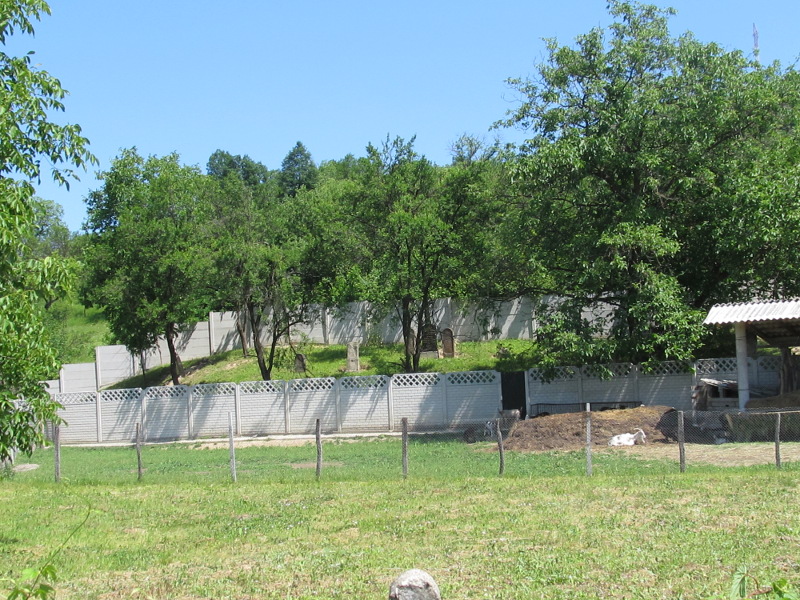JewishGen Romania SIG
JewishGen Hungary SIG
- Pinkas HaKehilot, Romania, Vol. 2 (1980), p. 231: "Camarzana"
- Encyclopedia of Jewish Life (2001), p. 231: "Camarzana".
ALTERNATE NAMES: CĂMĂRZANA [ROM], KOMORZÁN [HUN], CĂMÎRZANA, CĂMĂRĂZANA, CAMERDIANA. 48°00' N, 23°19' E, 24 MILES NE OF SATU MARE (SZATMÁR), 12 MILES W OF TYACHIV (TÉCSŐ), 13 MILES S OF KHUST. JEWISH POPULATION: 108 (IN 1880), 134 (IN 1930). Cămărzana is a commune of 2,304 inhabitants composed of a single village, Cămărzana.
CEMETERY:
The cemetery is located at Camarzana, 3923, judet Satu Mare, Romania at 4800 2319, 279.8 miles NNW of Bucharest and 21 km from Negresti Oas. The alternate names are Komorzan (Hungarian) Camarazana and CAMIRZANA (Romanian.) Present town population is 1,000-5,000. with no Jews.
- Mayor Tirc Ion, Town Hall of Camarzana, judet Satu Mare
- The Jewish Community of Satu Mare, Decebal Str. no. 4A, 3900 Satu Mare, Romania, tel. 0040-61-713703
- The Federation of The Jewish Communities of Romania, Sf. Vineri Str. no. 9-11, sect. 3, Bucharest, Romania
- "Dr. Moshe Carmilly" Institute for Hebrew and Jewish History, Universitatii Str. no. 7-9, room 61, 3400 Cluj-Napoca, Romania, Director: Ladislau Gyemant, This email address is being protected from spambots. You need JavaScript enabled to view it.
- "A.D. Xenopol" Institute of History, Lascar Catargi Str., no. 15, 6400- Iasi (judet Iasi), Romania. Tel. 032/212614; e-mail: This email address is being protected from spambots. You need JavaScript enabled to view it.. Director: Alexandru Zub.
- Key holder and caretaker: Doros Titiana, Camarzana, no. 283
The 1880 Jewish population by census was 85, by 1900 census was 154, and in 1930 was 131. In May 1944, the Jews were gathered in the ghetto of Satu Mare and on May 19, 22, 26, 29, 30, 31, and June 1 were deported to Auschwitz. The unlandmarked Orthodox, Hasidic cemetery was established in second half of the 19th century. Noteworthy individuals buried in the cemetery: one Cohan. Last known burial was interwar period
The hill and hillside, separate but near other cemeteries, has no sign or marker. Reached by a public road, access is open to all. A fence with a non-locking gate surrounds the site. Approximate pre-WWII size is unknown. Approximate post-WWII size is 39 x 8 m. 20-100 stones are visible. 1-20 stones are not in original location. Less than 25% of the stones are toppled or broken. Location of stones removed from the cemetery is unknown. Vegetation overgrowth in the cemetery is not a problem. Water drainage is good all year. No special sections. The oldest known gravestone dates from second half of the 19th century. The 19th and 20th century marble, limestone, sandstone, and concrete flat shaped, smoothed and inscribed, and carved relief-decorated common gravestones have Hebrew inscriptions. No known mass graves.
The local Jewish community owns the property used for Jewish cemetery and orchard. Adjacent properties are commercial or industrial. Rarely, private Jewish or non-Jewish visitors stop. The never vandalized cemetery maintenance has been cleaning stones and clearing vegetation by Jewish individuals within the country in 1998. Current care is regular unpaid caretaker. No structures.
Claudia Ursutiu, Pietroasa Str. no. 21, 3400 Cluj Napoca, Romania, tel. 0040-64-151073 visited the site and completed the survey in July 2000 using the following documentation:
- Recensamantul din 1880. Transilvania coord.: Traian Rotariu, Cluj 1997.
- Recensamantul din 1900. Transilvania Traian Rotariu, Cluj, 1999
- Recensamantul general al populatiei din 29 decembrie 1930 (The General Census of the Population from December 29, 1930), vol. II, Bucuresti 1938
- Recensamintul general al populatiei din Romania din 7 ianuarie 1992 (The General Census of the Population of Romania from January 7, 1992), vol. I, Bucuresti, 1994
- Zsido Lexicon, ed. by Ujvari Peter, Budapest, 1929
- Carmilly-Weinberger, Moshe. History of the Jews of Transylvania (1623-1944), Bucuresti, 1994, in Romanian
- Izvoare si marturii referitoare la evreii din Romania (Sources and Testimonies on the Jews in Romania), vol. III/1-2, coord. L. Gyemant, L. Benjamin, Bucuresti, Ed. Hasefer, 1999
- Ladislau Gyemant, Evreii din Transilvania in epoca emanciparii, 1790-1867 (The Jews of Transylvania in the Age of Emancipation 1790-1867), Bucuresti, ed, Enciclopedica, 2000
- Coriolan Suciu, Dictionar istoric al localitatilor din Transilvania (The Historical Dictionary of Localities in Transylvania), vol. I-II, Bucuresti, 1967
- Otto Mitelstrass, Historisch-Landeskundlicher Atlas von Siebenburgen, Ortsnamenbuch, Heidelberg, 1992
- Microsoft Auto Route Express 1999
Claudia and Adrian Ursutiu interviewed Doros Titiana, Camarzana. [January 2003]
[UPDATE]
On 5 June 2015, I visited the Jewish cemetery at Camarzana, Romania, (48-00x23-19) incidental to my visit to Tirsolt. I was accompanied by Mr. Paul Decsei, serving as my driver and interpreter (substituting for his father Mr. Nicolae Decsei, the guide for my trip), and Mr. Ioan Bojani, the Hebrew cemetery administrator for Satu Mare County. The cemetery is located off the road running through the town, to the rear of a home. The entrance to the cemetery is through a fenced yard containing several goats. The cemetery is surrounded by a perimeter wall made of posts and pre-cast decorative concrete panels about 8 feet tall. There is no sign but because the cemetery is located on a hill at a higher level than the road, the graves can be seen by passers-by on the road. A concrete path, several inches above grade, leads from the road to the yard containing the entry gate in the fence. The wall and the condition of the cemetery were characteristic of a renovation and restoration by the Avoyseinu organization of Brooklyn N.Y. undertaken in the past few years. The grass was trimmed and the graves were visible. A concrete path, several inches above grade, leads from the road to the yard containing the entry gate in the fence. Source: Allen Hausman, JG researcher 14033, Alexandria Virginia 22315 [June 2015]
A concrete path, several inches above grade, leads from the road to the yard containing the entry gate in the fence. This email address is being protected from spambots. You need JavaScript enabled to view it.[July 2015]
Photos courtesy This email address is being protected from spambots. You need JavaScript enabled to view it. [June 2015]

